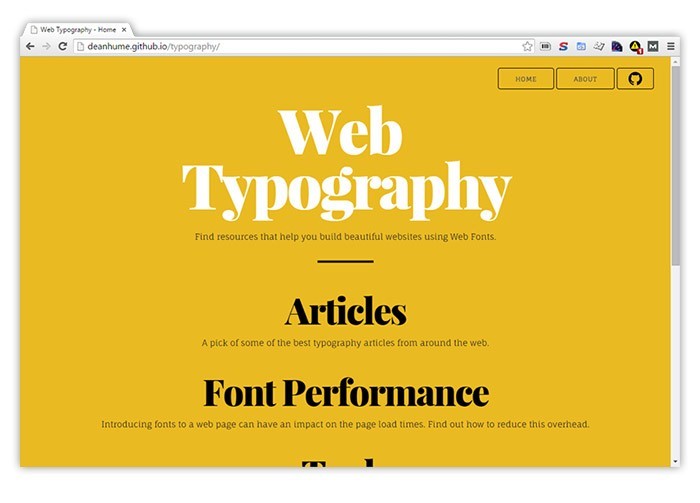Aixuze Insights
Explore the latest trends and insights on diverse topics.
Type It Like You Mean It: Web Typography That Speaks Volumes
Unlock the secrets of powerful web typography and transform your design—make your text speak volumes and captivate your audience!
The Essential Guide to Choosing Fonts for Your Website
Choosing the right fonts for your website is crucial for effective communication and user experience. Fonts can set the tone of your brand and help convey your message more clearly. When selecting fonts, consider readability and legibility. Websites are often viewed on various devices, so ensure that your chosen fonts look good on both desktop and mobile. For a comprehensive perspective on font choice, visit Smashing Magazine.
Additionally, consistency is key when it comes to font usage. A typical practice is to limit your selection to two to three fonts per website, typically comprising a header font and a body font. This maintains visual harmony and aids in building a cohesive brand identity. You might explore resources like Font Pair for suggestions on font pairings that work well together.

How Typography Influences User Experience in Web Design
Typography plays a crucial role in shaping user experience in web design. From the selection of fonts to the spacing between letters and the overall layout, each typographical choice can dramatically impact how visitors perceive and interact with a website. For instance, using appropriate font sizes enhances readability, while a well-structured hierarchy helps users to navigate content effortlessly. Effective typography draws attention to key information, encourages engagement, and creates a visually pleasing environment that stimulates positive feelings towards the brand.
Moreover, the emotional response elicited by typography should not be underestimated. Different fonts can convey distinct personalities and tones, influencing users’ perceptions and behaviors. For example, serif fonts often evoke a sense of tradition and reliability, while sans-serif fonts tend to feel modern and clean. According to Creative Bloq, aligning typography with the overall brand message is vital for fostering trust and connection with the audience. Therefore, designers must carefully consider not just what fonts to use, but how these choices reinforce the intended user experience.
5 Typography Mistakes That Can Diminish Your Message
Typography plays a crucial role in how your message is perceived. One of the most common mistakes is using too many fonts. Mixing multiple fonts can confuse readers and dilute your brand identity. Aim for a maximum of three different fonts: one for headings, one for body text, and one for accents. To explore optimal typography choices, check out Smashing Magazine for expert insights.
Another significant error is neglecting font size and line spacing, which can affect readability. If your text is too small, it may frustrate readers, while excessively large text can disrupt content flow. Additionally, insufficient line spacing can create a cramped appearance that makes it hard to read. To ensure optimal readability, consider delving into Creative Bloq for practical tips on achieving the perfect balance.